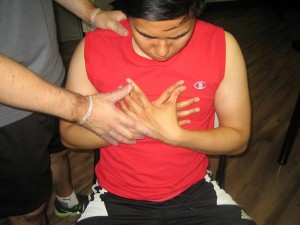Penicillin allergy is involves the overreaction by the immune system to penicillin and other antibiotics. An individual with penicillin allergy will suffer from a reaction such as rash or even anaphylaxis which is a very dangerous condition.
Penicillin antibiotics are prescribed for bacterial infections like strep throat, but not all reactions to penicillin are true penicillin allergy. Once a person has an allergic reaction to penicillin, he/she must avoid using penicillin and other antibiotics.
Individuals who have reported to have penicillin allergy does not have a true allergy, and they will only experience reactions like rash, but not all these reactions are allergies

- Hives
- Itchy skin
- Rash
- Wheezing
- Swollen lips, tongue or face which is known as angioedema
The most serious allergic reaction to penicillin is known as anaphylactic response which is very dangerous. These develop immediately after an exposure of penicillin in highly sensitive people.
Signs and symptoms
- Difficulty breathing
- Wheezing sound and drop in blood pressure
- Swelling of the tongue or throat
- Dizziness and loss or consciousness
- A rapid or pulse that is weak
If you want to learn how to effectively manage the symptoms of an allergic reaction to penicillin, all you have to do is to register for first aid training today.
Penicillin allergy happens when the immune system responds to the drugs as a harmful substance instead of a helpful remedy. The immune system causes certain cells to produce immunoglobulin E antibodies in fighting the components of penicillin in which people are allergic to. Chemicals that are released by the immune cells can cause symptoms or allergic reactions.
Penicillin is categorized to a group of drugs known as beta-lactam antibiotics and they are the penicillin and amoxicillin which are effective in treating bacterial infections. These infections are on skin, ear, sinus and the upper respiratory infections. Either orally or injected, penicillin stops the growth of bacteria in the body. There are several varieties of penicillin that targets different infection in the different parts of the body.
Treatment for penicillin allergy
Signs and symptoms of the allergy develop during an allergic reaction to penicillin.
- Anaphylaxis is the most and serious allergic drug reaction and can be dangerous and will require injection of epinephrine know as adrenalin and care for maintenance of blood pressure and breathing.
- Rashes and hives improve when treated with antihistamines, like diphenhydramine. Other cases would require an injection of oral corticosteroids.
- Inform his/her doctor or dentist about an allergy to penicillin.
- Wear a medical alert bracelet that describes the allergy, or carrying an alert card in the wallet or purse.
The best way to avoid an allergic reaction is avoiding penicillin and other similar antibiotics. If a person requires an antibiotic, the doctor will provide the person that he/she can tolerate and not included in the penicillin category.